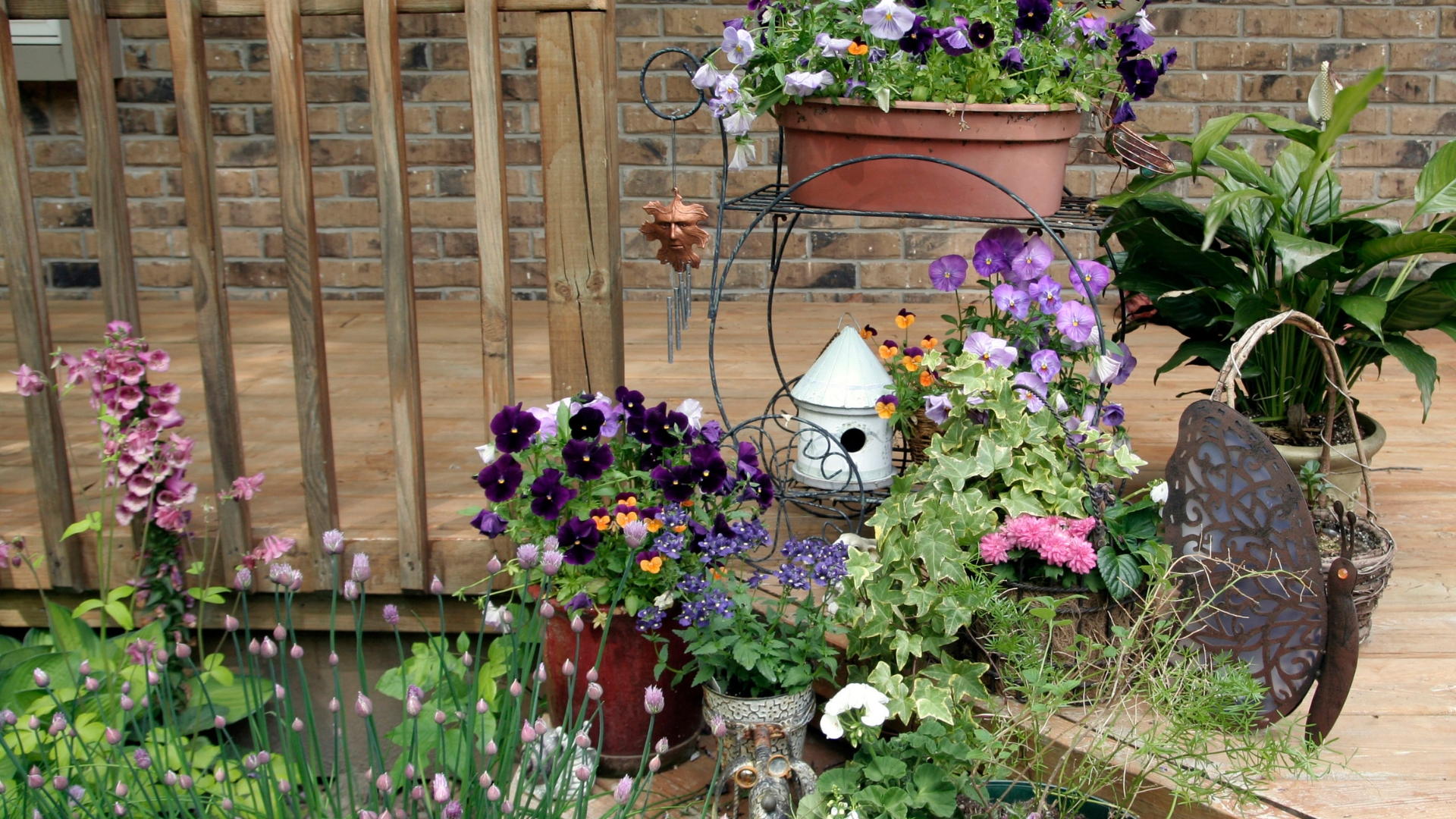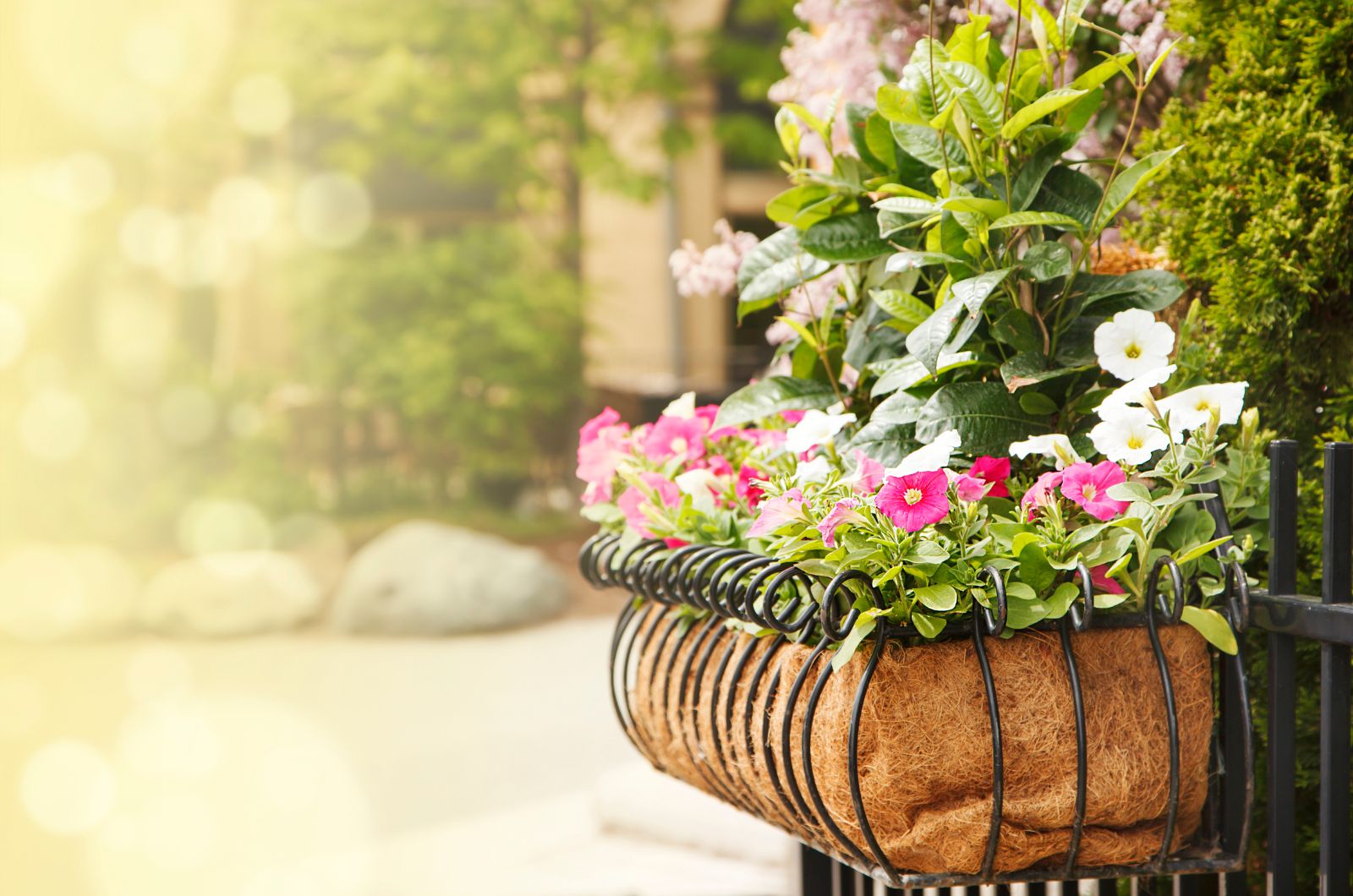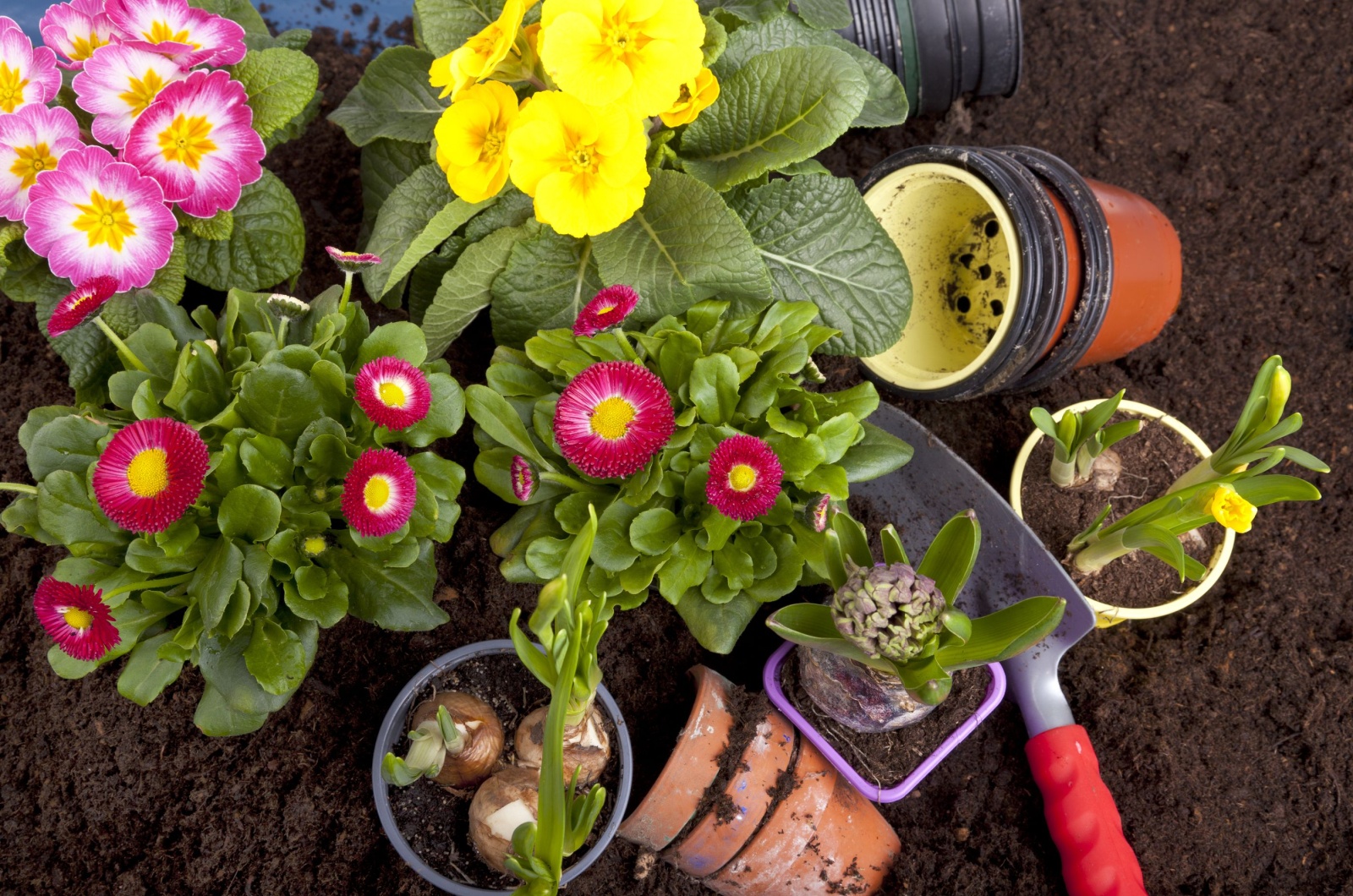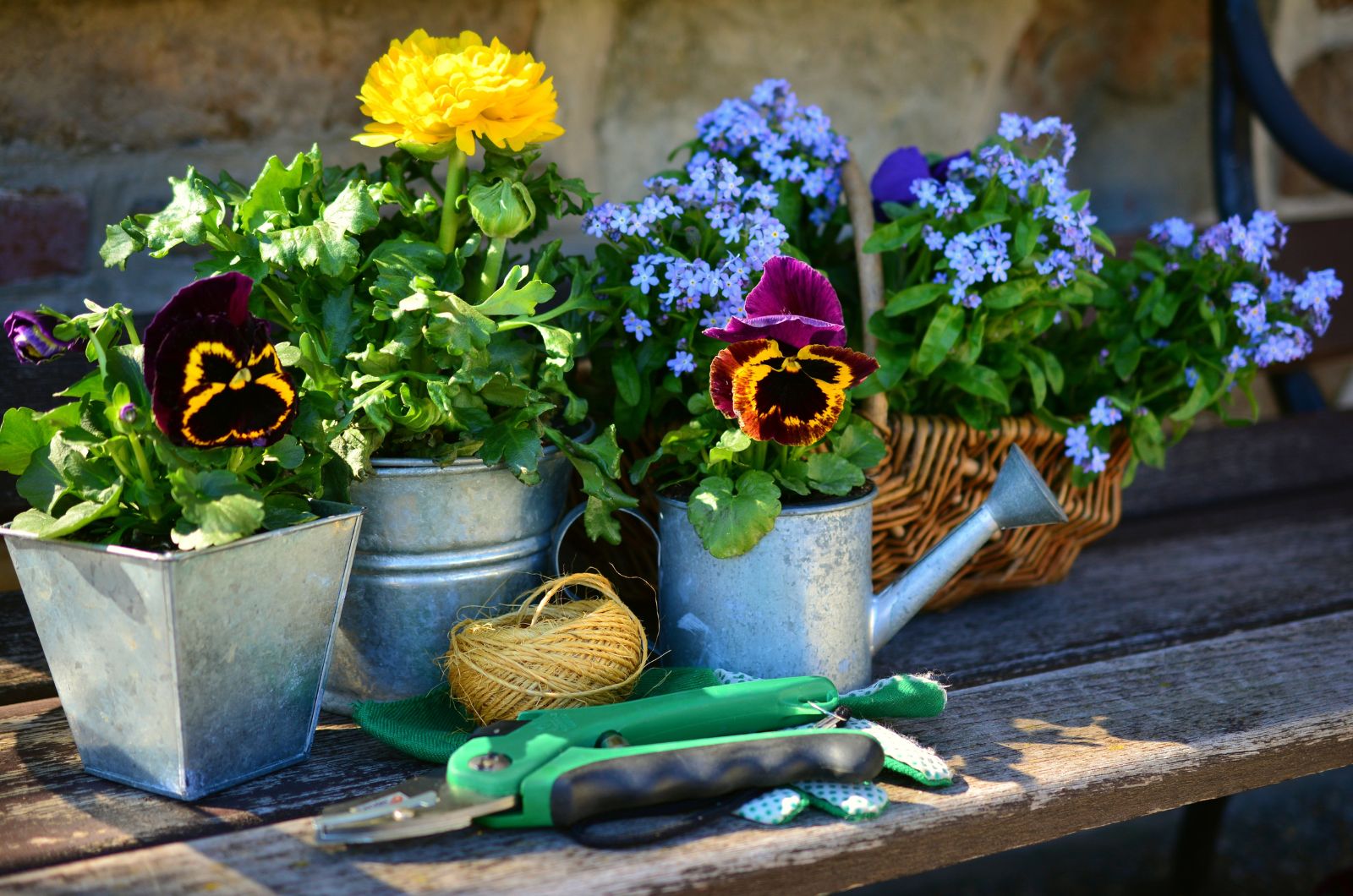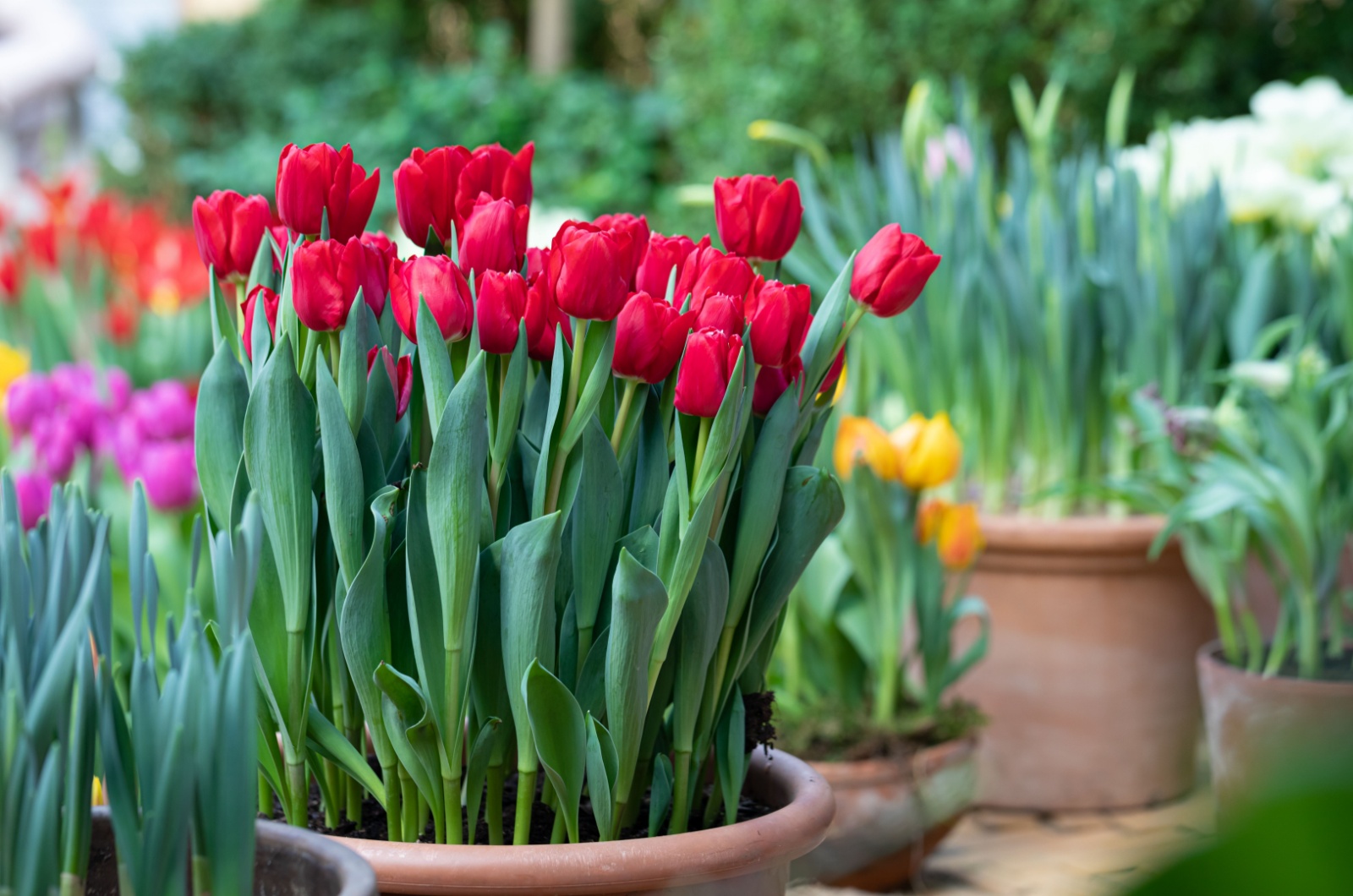I’ve always been a gardening enthusiast but I definitely can’t say the same for art and design. You know how I started my container garden? I simply purchased random plants and pots and put them next to each other without thinking if everything looked pretty.
I guess you can assume what happened; all possible colors were there, short plants were hidden by the taller ones, and planters had literally all designs, from renaissance to pop art.
Does this ring a bell? Well, I spent a lot of time researching different designs and possible combinations and I can finally say that I’m proud of how it turned out.
To help you avoid the disappointment I felt when I started, I’ll share with you a few tips that will definitely transform your garden display and you’ll get a whole new perspective on pot art!
1. Don’t Get Carried Away With Color Combinations
They say everything is dull in the modern world, but come on, it’s better to stick to simplicity than to overdo it. Since we want the best, we should strive toward a balance of everything!
Color palettes aren’t only reserved for professionals and understanding how colors combine isn’t rocket science. Trust me, if I managed to figure it out, anyone can. 😉
Here are some golden rules for color combinations, just make sure to choose the one that matches your personality!
Soft And Cool For Pure Elegance
What do you feel when you’re looking at white or pale blue flowers? Calm would be my answer. These colors breathe elegance and will brighten up the darker parts of your garden.
Put purple hydrangea, mauve cornflower, and white cyclamen in neighboring pots and enjoy the magic. I combined these plants last year, and now I’m thinking of adding some brightly-colored white mums to elevate the design even more.
Cashmere Colors For A Cozy Feeling
If you prefer more prominent colors but don’t want to overdo it, the cashmere color palette is perfect for you.
It includes pastel colors but in a bit warmer palette, such as faded coral or peach.
For me, these colors are the best for a spring garden; roses and tulips are a match made in heaven!
Spice Things Up With Stained-glass Colors
Do you have a well-lit spot in your garden and want to style it with flowers? Nothing will do a better job than a row of potted strawberry, lemon, orange, or cobalt blue-colored blooming plants!
These colors radiate energy, so whenever you feel down, just take a walk to this part of your garden.
Put the pots of orange gerberas, red tulips, and green euphorbias next to each other and let them rock your world!
Add A Dramatic Touch With A Dark And Rich Color Palette
Here’s another color palette you can use for brighter outdoor spaces. Dark purple, crimson, and bronze will take over the show once the sun rises.
These are the hues I chose for the border in the front of my yard. I planted dark red dahlias and burnt orange tulips and I think I did a great job. You should see the look on my neighbors’ faces every time they walk by!
2. Beware, Not All Plants Get Along Well
Different plants, different growing seasons! Remember this when purchasing plants for your brand-new design.
You want to have a display of blossoms at the same time, so make sure the flowering stage of your selected plants matches.
For instance, if you grow mesmerizing dahlias, you should combine them with some perennials, such as salvias, for summer display.
Or you can go with some summer-flowering bulbs; nothing can compare with the good old gladioles!
3. You Don’t Want Plants That Won’t Survive Summer
Another thing you want to do before you go to Home Depot and buy the desired plants is check their requirements.
This was one of my first mistakes when I embarked on this journey. I planted the delicate fuchsias and strong-growing petunias together and only the latter survived.
Well, last year, my garden was adorned with dahlias (yes, I adore these plants) and zinnias but I took things to a whole new level by adding a popular climber thunbergia and cascading petunia. All plants thrived and gave me no reason not to plant them again!
4. Mix And Match Plants In The Same Container
You want your pots to look rich and full, so there’s no point in planting a single tulip in a 12-inch pot.
I experimented a bit with tulips and the number of bulbs to put in each 12-inch container and I stopped at 30. You’ll most likely see many growers recommend planting up to 22 tulip bulbs per pot, but I like cram things in.
You can also use a thriller, filler, and spiller method. Wait, what? Rhyme is at its max when it comes to this method but it’s simple to understand.
A thriller plant is the eye-catchy one aka the star of the show, such as a marigold or geranium.
For fillers, we mainly use leafy plants, such as dusty miller, and their main purpose is to provide a backdrop.
Finally, we add spillers or vining plants like petunias that cascade over the pot rims. Gardeners, you nailed it with this method!
The only difference I noticed was that the more plants I put in the pot, the more water and fertilizer they required.
Planning Is The Key For Pot Art!
Selecting and designing garden pots may seem tricky at the beginning but planning is essential.
Once you visit a garden center, you have to know what you want or you’ll spend a fortune and bring too many plants home (been there, done that).
Combining colors and arranging plants is super fun and, with the guidelines I gave you, I’m sure you’re gonna make it! Good luck!

